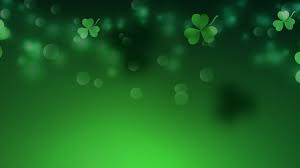It's that time of the year when you see all the people wearing green and being friendly to everyone. The smiles, the parade, the festivities are inticipated by many. The history behind the famous holiday is unfortunately not known by many. St. Patricks Day is a traditional day for spiritual renewal. Many attend mass offering prayers before the festivals and parades begin.
The Holiday
St Patricks Day officially became a holiday in the United States on March 17 and is really a religious holiday celebrated and observed by the Roman Catholic Church. The birth of this holiday was around the early 17th century and has grown to be a part of the Irish culture and celebrated throughout the world. Many American cities have their own unique traditions. In Chicago they die their river green, in seattle they paint their traffic stripe of their parade routes green. Even the white house die it's fountain green in celebration. Almost all American cities have parades and festivities but none are larger than New York City. The big apple St Patricks Day parade is one of the largest parades in the world and also the oldest civilian parade. Everyone from military, police groups, firefighters and politicians wear green and march down 5th Avenue. The parade had drawn controversy for many years for it's exclusion of openly gay orginizations.
The Three Leaf Clover
Many associated the three leaf clover with St. Patricks Day. It is even the national flower of Ireland. The meaning of the three leaf clover is quite simple. It is said that St. Patrick taught the pagans about the holy trinity. Each leaf representing The Father, The Son and The Holy Ghost.
Driving the Snakes Out of Ireland
St Patrick has been known for driving the snakes from Ireland. This is true and there are no snakes in Ireland but mainly because the island has been seperated from the rest of the continent since the Ice Age. The meaning of driving the snakes from Ireland is really a metaphore. St Patricks was the patron saint who is credited with bringing Christianity to Ireland and prior to this the pagans of Ireland use to worship serpent symbols in their religion. So when St Patrick brought christianity he drove out the snakes and serpent worship.
What would St. Patrick's Day be without a crock a' gold or perhaps a wee leprechaun tugging at that frown on your face? So, with the light-heartedness of the season in mind, The Celtic Connection once again brings you some fun facts about St. Patrick's Day.
As with Imbolg, Groundhog Day, Valentine's Day and Easter, St. Patrick's Day owes it deepest origins to the coming of spring. Arriving at 5:09 PDT on March 20, the vernal equinox is a date on which the sun's rays illuminate half the earth, with neither the North nor South Pole angled into the sun.
Ever get confused about four-leaf clovers and three-leaf shamrocks? The four-leaf clover, which you might find now and then out in your lawn, represents the solar-worshipping invaders of Ireland, the Celts and their crowd.
The shamrock refers to the importance of triplism to Ireland's indigenous tribes as well as the triple worship of the Goddess of Ireland Ana (also Aine and Dana) in her aspects of maid, mother and crone. The symbol was eventually written into the legend of St. Patrick to describe the Trinity.
Speaking of St. Patrick, one of the enduring yarns of St. Patrick's Day involves the saint standing atop the Reek (Croagh Patrick) and ringing a bell that banishes the snakes of Ireland to the sea in a masterstroke of pest extermination.
However, the land bridge that connected Ireland to Europe was swamped by the ocean sometime around 5800 BC which undoubtedly prevented any ophidian from wiggling its way to Ireland in the first place.
But the snake is more than a simple prop to a patron saint. A quintessential symbol of fertility and renewal, the snake has long been associated with Goddess worship. The tale of the "snake" leaving Ireland illustrates a Christian longing for the eradication of the ancient and benevolent goddess worship that once dominated Ireland. Also, as the snake was a symbol associated with the Druid caste, its departure could also apply to the gradual dilution of druidic beliefs into the early Christian church.
Green beer, green leprechauns, green hats - green everything on St. Patrick's Day. Green is the colour of Ireland, of mysterious deeds, of an awakening earth, of the mist that lies in the hollows foretelling the coming of spring, of the shoots whose green colour deepens as they stretch toward the sun. Green is a verdant countryside and the colour of the finest season of the year - it is no wonder that wearing a bit of it wards off bad luck!
The shillelagh is brought to us by the Dagda, good god of the Tuatha de Dannan. Literally the "staff of life" the club had phallic abilities of mythic proportion as well as the ability to bring the dead to life.
The crock of gold, beloved of the wee folk, has ancient origins as well. The Dagda, though possessed of a "Cauldron of Abundance" likely gained his magical pot from an earlier goddess such as Cerridwen, the Great Mother. The cauldron unites the four elements - fire, the green herbs of earth, water and air - to form the womb of the Goddess and surely there can be no richer vessel than that.
Beloved of the Druids, Cerridwen's gold was the lore and knowledge of that priestly class. But the Druid's trafficked in more than wisdom and vanishing gold reminds us of the trade routes they governed on which Irish gold was carried from Ireland to Britain. Gone, but never forgotten, desired, but just out of reach.
The leprechaun belongs to a wider realm of Otherworldly beings. Leprechauns are solitary and apparently always male. They are rather stuffy and when considered in their traditional, non-commercial form, can be quite foul-mouthed. Some of their attributes, like a red beard and quality leisure time spent on a toadstool seem to be borrowings from European or Germanic folklore. Nonetheless, their relatives, the fairy folk are all we have left of the old Gods, the Tuatha de Dannan, and we're proud to count them as friends.
The saint for whom the day is named was born Magonus Sccatus. Kidnapped from southwestern Britain, he was made a slave in Ireland for six years. Upon his escape he returned to Britain and was later christened "Patricus."
Late in life, around age 40, he capitulated to the inner voice that directed him to return to the land of his captivity. Upon returning to Ireland he joined the Christian missionary effort then in place and lived out his life there.
The legends and lore of St. Patrick make good fables, but they bear no resemblance to the actual life and mission of Patricus. Meant to inspire, these florid stories of driving away hags and druids detract from the meaningful and still timely message to be found in a hard-lived life of deprivation, faith and conviction.
Whether your fancy runs to shamrocks, the emergence of spring or the heroic life of a mortal man, St. Patrick's Day has something for everyone. Enjoy!





